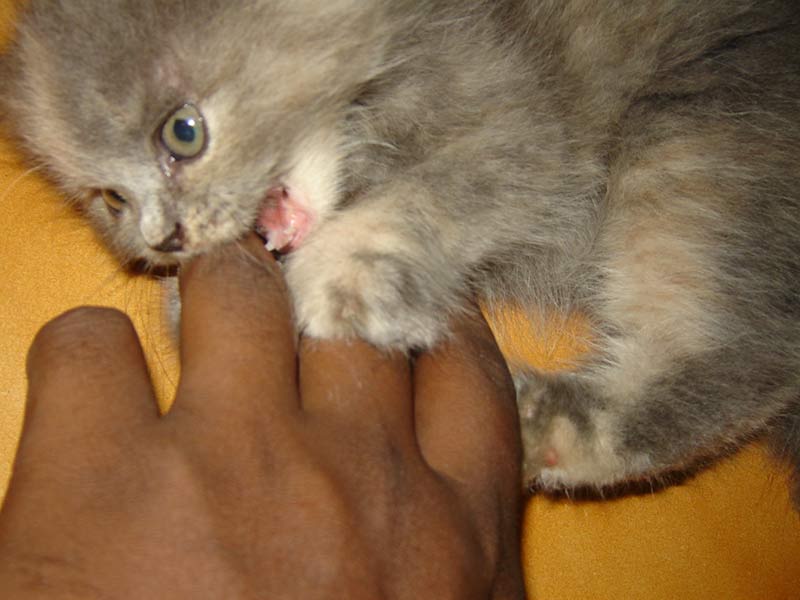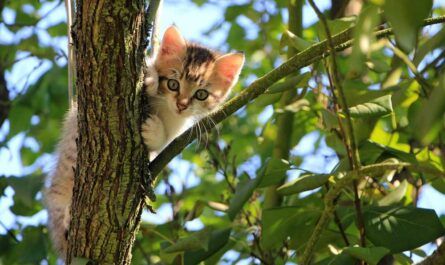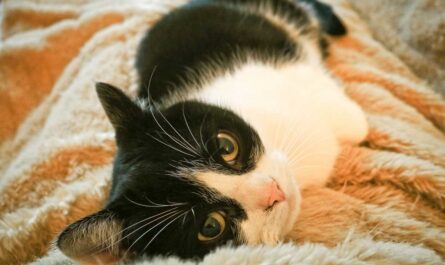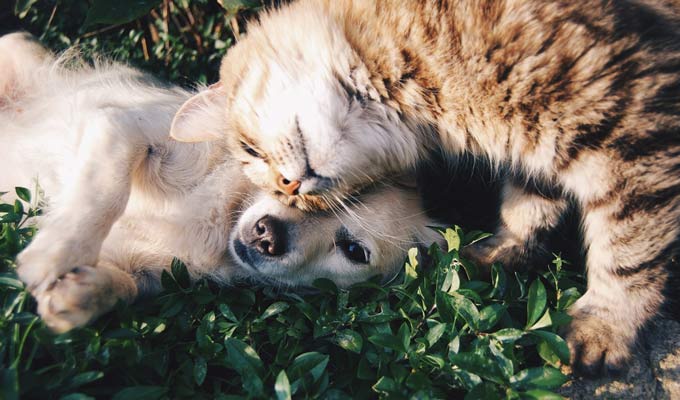Why do cats suckle? Kittens, those irresistibly adorable feline offspring, possess an inherent trait: a robust suckling and kneading reflex that accompanies them from the moment they enter the world. However, a curious question arises when this endearing behavior persists into the realm of adulthood. What unfolds when suckling and chewing, typically associated with the innocence of kittenhood, continue into the more mature stages of a cat’s life? This article will share insight into why cats suckle. Keep reading.
Transition to Adulthood
In the usual course of feline development, most cats tend to outgrow their suckling tendencies after the weaning phase. Yet, intriguingly, certain felines defy this norm and persist in displaying suckling behavior well into their adult years. This departure from the ordinary is not merely a quirk but often signals a predisposition towards heightened attachment and, in extreme cases, the development of obsessive-compulsive tendencies.
Exploring the Phenomenon
To comprehend why a fully grown cat engages in suckling behavior, it becomes imperative to delve into the intricacies of this feline idiosyncrasy. What triggers it? Should cat owners be alarmed? Is there a cause for concern regarding the emotional well-being of the cat in question? These questions demand exploration, and the journey into the enigmatic realm of adult cat suckling is both fascinating and nuanced.
What Is Cat Suckling?
At the heart of this feline peculiarity lies the act of suckling itself. When an adult cat partakes in suckling behavior, it involves the rhythmic repetition of suckling on an object without any intention of material consumption. It is crucial to distinguish this behavior from pica, a condition where cats ingest non-edible items. Illustrative depictions often capture these cats engaged in the soothing act of suckling, reminiscent of their kitten days, seeking comfort in a seemingly innocuous activity.
Breeds and Behavioral Nuances
The prevalence of suckling behavior varies among feline breeds, with Oriental varieties such as Siamese, Tonkinese, Balinese, and Burmese displaying a particular inclination towards this behavior. In these instances, suckling is not merely a random, harmless act; it is accompanied by the gentle purring of the feline and the rhythmic kneading of its front paws. Such behaviors are triggered by the cat’s interaction with its owner or the soft touch of a blanket—a nostalgic echo of kittenhood when suckling was linked to nursing behavior.
Insights from Studies
A study conducted by Martin in 1986, focusing on seven mothers and their litters, revealed intriguing findings. The volume of suckling decreased significantly after four weeks post-birth and became infrequent after seven weeks. Nevertheless, the real-world scenario challenges these findings, with numerous breeders reporting instances of kittens persisting in suckling well beyond the suggested timeframe. The ambiguity persists—whether the behavior is driven by a lingering need for nutrition or an emotional crutch, making it imperative for vigilant monitoring to prevent potential gastrointestinal complications.
Common Reasons Why Cats Suckle
In unraveling the multifaceted layers of adult cat suckling, one venture into a domain where scientific studies interlace with the anecdotal observations of breeders, all while striving to comprehend the intricacies of feline psychology. The tale of cat suckling is a narrative that weaves the threads of instinct, nostalgia, and the complexities of the human-animal bond.
1. Innate Instincts: Unlocking Feline Mysteries
Within the enigmatic world of cats, where their behaviors often elude human comprehension, the act of suckling emerges as a multifaceted enigma rooted in profound innate instincts. These creatures, possessing an aura of inscrutability, embark on the journey of suckling propelled by a complex interplay of evolutionary predispositions. This behavior traces its origins back to the tender moments of kittenhood when the rhythmic cadence of nursing not only satisfied their physiological needs but also wove an intricate tapestry of security and warmth. These primal instincts, forged in the crucible of early life experiences, persist into the tapestry of adulthood, weaving a narrative that manifests in diverse situations and scenarios.
2. Comfort-Seeking Behavior: Cradle of Serenity
Beyond the realm of mere sustenance, suckling in cats metamorphoses into a delicate dance of comfort-seeking behavior. The repetitive motion, akin to a feline lullaby, interwoven with the soft purring soundtrack, transcends the boundaries of physical necessity. It transforms into a nuanced expression of self-soothing, a coping mechanism that cats employ when faced with the rigors of stress, the pangs of anxiety, or the disquiet of unfamiliar surroundings. In this intricate tapestry of behavior, the act of suckling becomes a cradle of serenity, a refuge where cats find solace reminiscent of the human predilection for familiar habits during moments of unease.
3. Weaning Woes: Navigating the Transition
Weaning, a pivotal juncture in a kitten’s developmental odyssey, symbolizes the delicate shift from the dependency on the mother’s milk to the exploration of solid sustenance. Yet, within this crucial phase, some kittens find themselves entangled in the complexities of weaning woes. This process, intended to usher in independence, can become a labyrinth for certain feline individuals. The challenges encountered during this transition may metamorphose into a protracted desire for suckling, with cats clinging tenaciously to the familiar sensations of nursing. Even after the nutritional necessity diminishes, the act of suckling transforms into a habitual behavior, etching itself indelibly into the fabric of their daily rituals.
4. Behavioral Regression: Seeking Stability in the Familiar
In the intricate tapestry of feline behavior, the phenomenon of behavioral regression emerges as a compelling narrative. Cats, creatures finely attuned to their environments, may resort to suckling as a form of regression when faced with significant upheavals. The introduction of novel elements, be it moving to a new home or the arrival of a new pet, can act as catalysts for this regression. The stress induced by these changes propels a cat to retreat into the soothing familiarity of suckling, a sanctuary offering a semblance of stability amidst the turbulence of transition. In this regression, the act of suckling becomes a symbolic anchor, grounding the feline psyche in the comforting echoes of the past.
5. Attention-Seeking Tendencies: The Social Ballet of Suckling
Within the intricate tapestry of feline communication, suckling emerges not merely as a solitary act but as a nuanced dance aimed at garnering attention. Cats, renowned for their astuteness, possess a keen awareness of the responses their behaviors elicit from their human companions. The act of suckling, with its rhythmic cadence, becomes a deliberate overture, an invitation for interaction. In this social ballet, a cat may strategically engage in suckling, knowing that the ensuing response—soothing words, gentle petting, or other forms of positive reinforcement—serves as a currency of attention. Thus, the attention-seeking tendencies inherent in suckling add a layer of complexity, transforming it from a solitary ritual into a subtle form of interspecies communication.
6. Inherited Traits: A Genetic Tapestry of Suckling Predisposition
Delving into the realms of feline genetics unveils an intriguing facet of the suckling phenomenon—the influence of inherited traits. The penchant for suckling, it appears, is not solely a learned behavior but a trait woven into the genetic fabric of specific feline lineages. Certain breeds exhibit a heightened predisposition for this behavior, turning it into a hereditary characteristic passed down through generations. Unraveling the mysteries behind suckling requires an exploration of these genetic underpinnings, adding a layer of complexity to the intricate dance of nature versus nurture within the feline realm.
7. Medical Considerations: Unveiling the Veil of Physical Distress
While the limelight often shines on behavioral aspects, the shadow of potential medical considerations looms over discussions on suckling in cats. Dental issues, gastrointestinal problems, or discomfort in the oral region can serve as catalysts, prompting a cat to engage in suckling as a response to physical distress. Understanding the nuances of this feline idiosyncrasy requires peeling back the layers to reveal the possibility of an underlying medical cause. In this medical tableau, suckling transforms from a behavioral curiosity to a potential signal, beckoning pet owners to delve into the intricacies of their feline companion’s physical well-being.
8. Environmental Enrichment: Crafting a Haven of Distraction
In unraveling the root causes of suckling, a holistic approach emerges as the linchpin of understanding and intervention. The concept of environmental enrichment takes center stage, offering a tapestry of solutions to redirect a cat’s focus away from suckling. Providing an abundance of stimuli, engaging toys that captivate their curiosity, and crafting a secure, nurturing environment become essential elements of this holistic strategy. In this symbiotic dance between feline instincts and human intervention, pet owners assume the role of orchestrators, playing an instrumental part in mitigating or even eliminating suckling behaviors. The result is a harmonious relationship, a symphony where the needs of feline companions and their human counterparts seamlessly intertwine.
9. Psychological Connection: Threads of Ritual and Contentment
Beyond the tangible realm of behavior lies the intricate web of a cat’s psychological well-being, where the act of suckling weaves a narrative that extends far beyond the physical act. Cats, creatures of habit, forge profound psychological connections with routines and behaviors that define their daily existence. Suckling, with its amalgamation of tactile and sensory elements, transcends the boundaries of a mere physical act. It transforms into a deeply ingrained ritual, an intricate dance that fosters a psychological association with feelings of contentment and security. In this tapestry of psychological connections, suckling becomes more than a behavior—it morphs into a tangible expression of the feline need for familiarity and emotional well-being.
10. Orphaned Kittens’ Legacy: Echoes of Vulnerability
For a subset of cats, the persistent inclination towards suckling becomes an indelible legacy intertwined with the threads of their unique life histories. Orphaned kittens, prematurely severed from the nurturing embrace of their mothers, carry the torch of suckling into the realm of adulthood. The absence of a mother cat’s comforting presence during their formative weeks leaves an enduring imprint, birthing a lifelong attachment to the act of suckling. This lingering behavior, a poignant reminder of their early days of vulnerability, stands as a testament to the enduring impact of maternal absence on feline development, etching a narrative of resilience and adaptation.
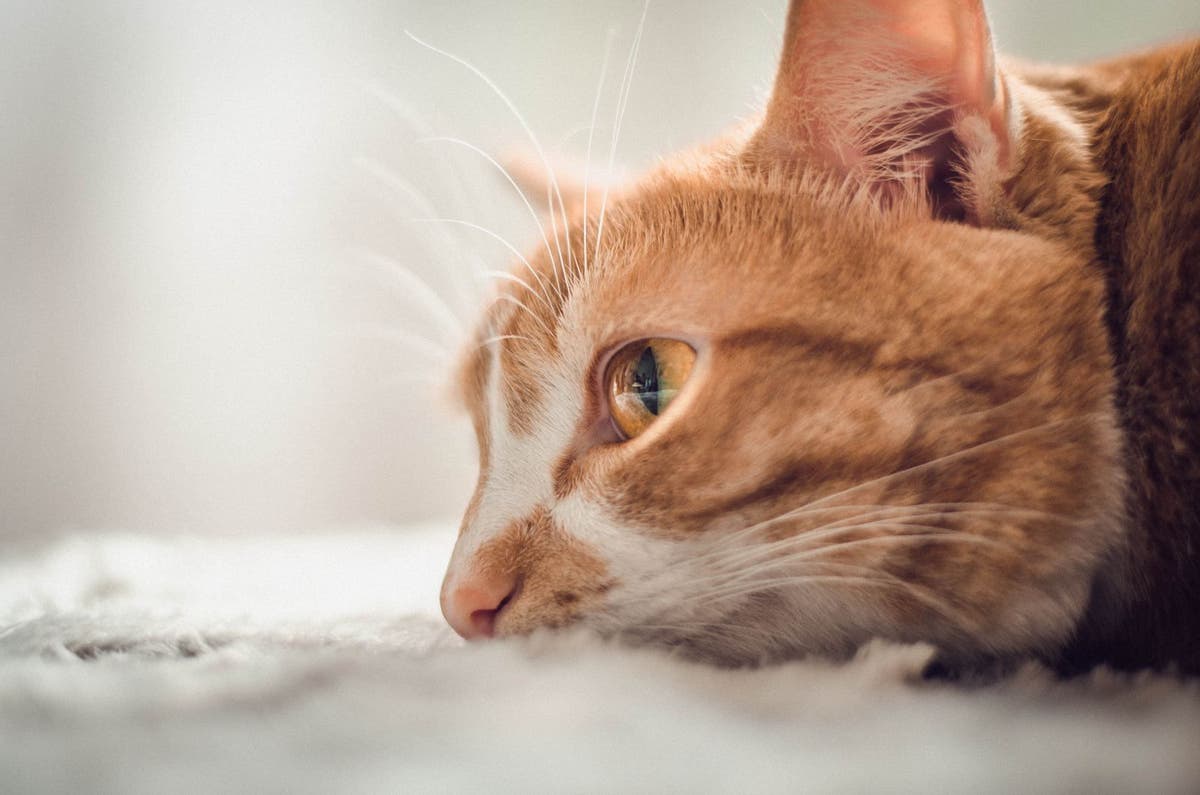
Mitigating Cat’s Suckling Behavior: A Comprehensive Approach
The vivid image of a feline, ensconced in the act of suckling on a blanket, presents a poignant tableau—a manifestation of a comforting and self-soothing action reminiscent of its bygone kittenhood. However, if this behavior escalates to a point where it poses harm either to the cat itself or its human companions, intervention becomes imperative. Here, we delve into a multifaceted strategy to discourage or halt this behavior, recognizing the importance of addressing both the psychological and physical dimensions of the cat’s needs.
1. Environmental Intervention: A Blanket Ban
An initial step in dissuading the intensified suckling behavior is to conduct a meticulous inventory of the cat’s favorite suckling spots. Throws, blankets, and items of clothing that serve as the feline’s suckling canvas should be promptly removed from its access. Concealing these cherished items in cupboards becomes paramount, creating a physical barrier that dissuades the continuation of the behavior.
2. Strategic Replacement: Tactile Alternatives
If the suckling proclivity persists, a strategic replacement of the favored blanket or toy becomes essential. Opt for fabrics devoid of loose threads, non-toxic in composition, and lacking components that can be chewed or sucked off. The introduction of alternative substrates designed for chewing and sucking, yet incapable of ingestion, provides a constructive outlet for the cat’s instinctual needs.
3. Dietary Modification: Chewy Diversions
Delving into the dietary realm, modifying the cat’s food intake emerges as a potential avenue for behavioral redirection. Soft hide chews or the inclusion of raw chicken wings or necks can serve as avenues for encouraging mastication. However, a caveat lies in the implementation of appropriate safety precautions when introducing raw elements to the feline diet.
4. Sensory Substitution: A Teddy Bear Tango
An intriguing aspect of the intervention involves rechanneling the cat’s suckling inclination towards a designated substitute—enter the teddy bear. By smearing the cat owner’s scent onto this soft toy and consistently offering it whenever the feline commences suckling, a sensory substitution is enacted. This nuanced approach acknowledges the cat’s need for tactile reassurance in a controlled and redirected manner.
5. Aromatic Calm: Feliway Diffuser Deployment
Incorporating olfactory elements into the strategy, the deployment of a Feliway diffuser emerges as a noteworthy tool. This pheromone-releasing device aids in inducing relaxation, curbing the feline’s compulsion to suckle as a stress response. It represents a harmonious marriage of physiological and psychological interventions to foster an environment conducive to behavioral change.
6. Compassion Over Condemnation: Avoiding Negative Reinforcement
A crucial tenet of the intervention paradigm is rooted in compassion rather than condemnation. Shouting or punitive measures are eschewed, recognizing that such actions may exacerbate the cat’s existing state of anxiety. Instead, a patient and understanding approach is championed, acknowledging the complexity of feline psychology.
7. Professional Consultation: A Veterinary Inquiry
As a culmination of the intervention strategy, arranging a veterinary examination assumes paramount importance. This step aims to rule out any underlying medical issues that might be contributing to the heightened suckling behavior. A comprehensive evaluation ensures that physiological concerns are not overlooked in the pursuit of behavioral modification.
In this intricate tapestry of interventions, each thread is woven with precision and consideration, addressing the myriad facets of a cat’s behavioral intricacies. By navigating this labyrinth with a thoughtful and holistic approach, one endeavors to create an environment that nurtures the well-being of both feline and human counterparts.
How To Fulfill Your Cat’s Emotional Needs
To truly satisfy your feline companion’s emotional needs, requires more than just providing food and shelter. A profound insight into your cat’s innate behaviors becomes the compass guiding you through this endeavor. Understanding the interplay between their physical and social environments is crucial. The intricate dance of their emotions is akin to deciphering an enigmatic puzzle, and addressing it demands a tailor-made approach that goes beyond the surface.
Ensure Your Cat’s Environmental Needs Are Met
In the vast tapestry of a cat’s life, environmental satisfaction is a cornerstone. The Feline AAFP/ISFM Environmental Needs Guidelines, a collaborative effort by the American Association of Feline Practitioners and the International Society of Feline Medicine, unravel a comprehensive guide. This guide delves into the intricacies of understanding a cat’s needs and articulates how these needs can be met, especially for those confined within the cocoon of an indoor existence.
Offer Opportunities For Play And Predatory Behaviour
Unleashing the feline prowess involves acknowledging and channeling their inherent hunting instincts. The tableau of play aggression, intricately illustrated, captures the essence of feline play. This play, sometimes mistaken for aggression, underscores the delicate balance that needs to be struck. The amalgamation of boredom and indoor confinement can exacerbate undesired behaviors, such as suckling. Enter the realm of simulated-predatory play and feeding behaviors, orchestrated through toys and puzzle feeders, elevating the feline experience.
Prevent Or Minimise Distress From Situations And Triggers As Much As Possible
Navigating the labyrinth of a cat’s emotional world involves minimizing distress triggers. The nuanced strategy lies in not aiming for an elusive stress-free existence but in strategically sidestepping and mitigating potential stressors. Anticipation emerges as the vanguard against distress, a proactive stance against triggers that might unsettle your feline companion.
Encourage Harmonious Living In Multi-Cat Households
The tapestry of a harmonious multi-cat habitat weaves together elements of compatibility and environmental enrichment. Choosing congenial feline individuals or opting for siblings becomes the cornerstone of reducing anxiety and potential conflicts. An intricately designed physical environment, adorned with strategically scattered resources and distinct entry/exit points, forms the canvas upon which harmonious coexistence is painted.
FAQS
1. Why do cats nurse on blankets?
Cats, those enigmatic creatures that grace our homes with their presence, often engage in a peculiar behavior—nursing on blankets. It’s a display deeply rooted in their instincts, often tied to feelings of pleasure and relaxation. The soft fabric seems to evoke a sense of comfort akin to the warmth of a mother cat’s belly. However, this seemingly innocuous act can be a silent indicator of an underlying issue; a cat may resort to blanket nursing as a coping mechanism in response to anxiety or distress. It’s imperative for vigilant pet owners to discern these subtleties and stay attuned to accompanying behavioral shifts that might signify pain or unease.
2. Why do cats knead and suckle?
Another captivating aspect of feline behavior revolves around the rhythmic dance of kneading and suckling. From their earliest days as kittens, these actions are ingrained in their nature. While the roots of this behavior lie in the comforting motions kittens make while nursing, the story continues into adulthood. Hypotheses surrounding this phenomenon in grown-up cats suggest multifaceted purposes. It may serve as a stress-alleviating ritual, a means of self-soothing during moments of heightened emotion or unease. Observing a cat engaged in this ballet provides a glimpse into the complexity of their emotional landscape, offering a tableau of instinctual responses to the world around them. Cat accessories on Amazon
3. Why do some cats suckle their humans?
In the intriguing tapestry of feline behavior, some cats take their suckling tendencies a step further by directing their affectionate rituals toward their human companions. The reasons behind this peculiar act are varied and often tied to the cat’s early experiences. A mature cat may resort to suckling on its owner due to early weaning or, intriguingly, in response to an unexpected separation from its mother. Kittens that have been hand-raised or bottle-fed are particularly prone to developing this behavior. The transition to adulthood doesn’t necessarily mark the end of this endearing habit; some cats outgrow it, while others persist in their gentle suckling, turning to body parts or soft items for solace well into their mature years. Understanding this behavior adds another layer to the intricate bond between feline and human, a silent communication that transcends words.
Final thought
In the grand finale of feline behavioral dynamics, the annoyance of suckling is placed under the spotlight. Though vexing for an owner, it generally poses no harm to the feline unless it metamorphoses into an obsessive-compulsive ritual involving the gnawing of non-nutrient items. In such instances, the sage counsel of a veterinarian becomes imperative, a conclusive note underscoring the importance of professional intervention in the intricate world of feline behaviors.
Other Interesting Articles
- Turkish Vankedisi Cat Profile, Traits, Health, Grooming, Care
- Ukrainian Levkoy Cat Breed: Profile, Traits, Grooming, Care
- Ussuri Cat Breed: Profile, Traits, Personality, Grooming, Care
- York Chocolate Cat Breed: Profile, Traits, Health, Care
- Tonkinese Cat Breed: Profile, Traits, Health, Grooming, Care
- Siberian Cat Breed: Profile, Traits, Health, Grooming, Care
- How to Perfectly Place A Litter Box for Your Cat? 46 FAQs
- 17 Best Types of Toys to Play at Home with Your Cat
- Snowshoe Cat Breed: Profile, Traits, Health, Grooming, Care
- Munchkin Cat Breed: Profile, Traits, Personality, FAQs, Care
- Minuet Cat Breed: Profile, Traits, Personality, Grooming, Care
- Persian Cat Breed: Profile, Traits, Personality, Health, Care
- Ragdoll Cat Breed: Profile, Traits, Personality, Grooming, Care
- Scottish Fold Cat Breed: Profile, Traits, Personality, FAQs, Care
- Russian Blue Cat Breed: Profile, Traits, Personality, FAQs, Care
- Balinese Cat Breed: Profile, Traits, Personality, Care, Facts
- Australian Mist Cat Breed: Profile, Traits, Personality, Care
- Abyssinian Cat Breed: Profile, Traits, Personality, Care, Facts
- Bengal Cat Breed: Profile, Traits, Personality, Care, Grooming
- Birman Cat Breed: Profile, Traits, Personality, Care, Grooming
